Contents
Cements – Composition, Types
Finish up cement manufacture
Properties of component phases
Types of cements
Summary of Kiln Reactions
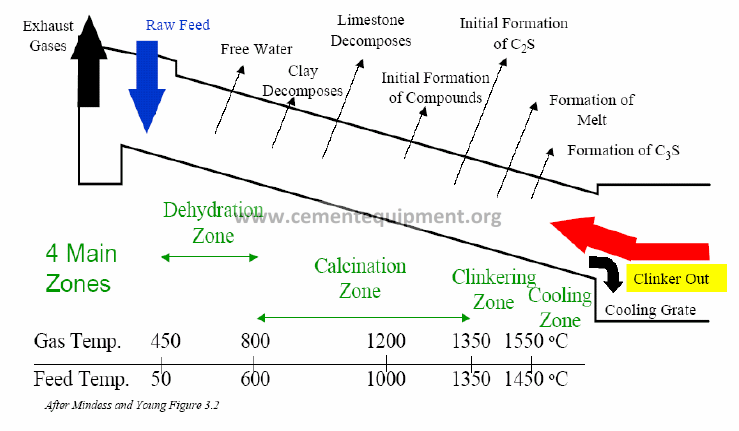
CLINKER
Clinker is what comes out of the kiln
3 to 25 mm in diameter
20-25% Molten
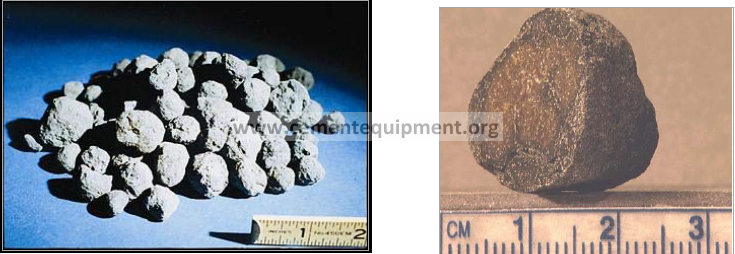
Compound Composition of Clinker / Cement
Four major compounds formed from the oxides under high temperature in the kiln
Name (Oxide Notation) – Shorthand
Tricalcium silicate (3 CaO. SiO2) – C3S
Dicalcium silicate (2 CaO. SiO2) – C2S
Tricalcium aluminate (3 CaO. Al2O3) – C3A
Tetracalcium aluminoferrite (4 CaO. Al2O3. Fe2O3) – C4AF
Summary of Cement Compounds
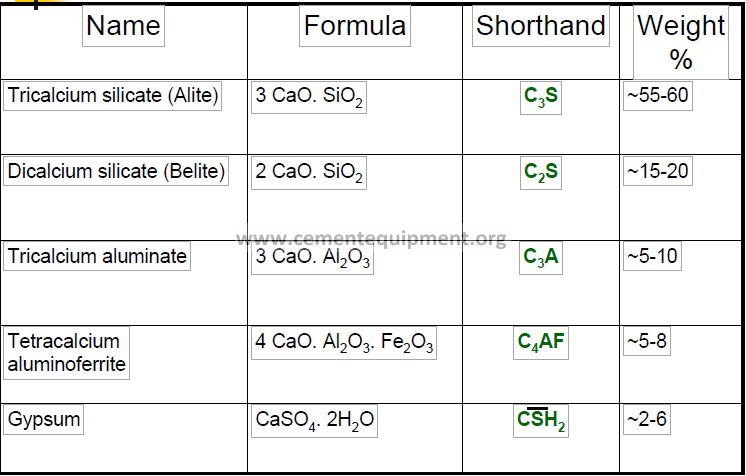
Implications of compound composition
Determines the physical and mechanical characteristics of the cement
Determines its chemical activity
Determines its scope of use
Determines the cost
Contributions of Compounds to Strength
C3S contributes to high early strength – tomake high early strength concrete, higher
C3S proportions needed
C2S contributes to later age strength –defines the long term strength
C3A reacts immediately with water – defines set
In the absence of gypsum, C3A causes flash set
Compressive strength development of pure cement compounds
C3A reacts instantaneously
Final strength determined by C3S and C2S
Increase C3S for high early strength
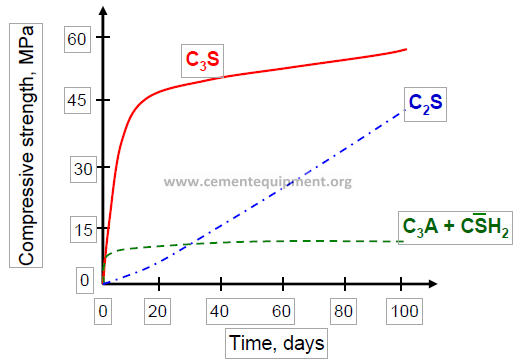
Making Life Harder – I
Remember the compound name, oxide notation, and the shorthand notation…
Just to make sure that cement and concrete is complicated, tricalcium silicate in its impure form in clinker is historically called Alite
Even more complication arises – various crystalline polymorphs of tricalcium silicates exist
Similar troubles for other compounds also
Making Life Harder – II
Not all cement components can be expressed by the oxide formulae and shorthand notation
Chlorides, Fluorides etc
Expressed using normal chemical formulae
Mineral names are commonly used for raw materials (calcite, quartz) and for some cement hydration products (ettringite, portlandite etc)
Beware of “LIME”
Be clear what you mean when you say
“Lime”
“Lime” can be used for CaO, either by itself or in combination with other components
“Lime” can be used for Calcium hydroxide (also called portlandite, abbreviated as CH)
“Lime” is sometimes used for limestone rock or its major chemical component calcium carbonate
Manufacturing control criteria in the Kiln
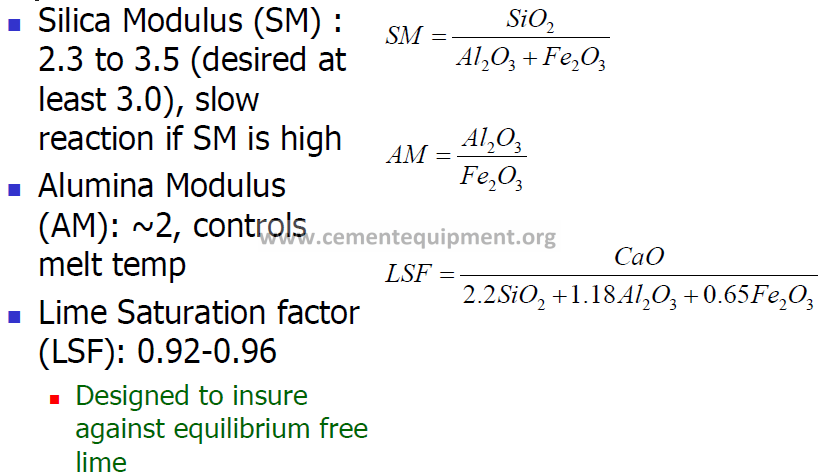
Bogue’s Equations – Compound composition
To calculate the amounts of C3S, C2S, C3A, and C4AF in clinker (or the cement) from its chemical analysis (from the mill certificate)
Assumptions in calculations
Chemical equilibrium established at the clinkering temperature
Components maintained unchanged through the rapid cooling period
Compounds are “pure”
Bogue’s Equations
Case 1 : A/F >=0.64
C3S = 4.071C – 7.6S – 6.718A – 1.43F – 2.852S
C2S = 2.867S – 0.7544C3S
C3A = 2.65A – 1.692F
C4AF = 3.043Fv
Case 1 : A/F >=0.64
C3S = 4.071C – 7.6S – 6.718A – 1.43F – 2.852S
C2S = 2.867S – 0.7544C3S
C3A = 2.65A – 1.692F
C4AF = 3.043F
Clinker components and Temperature
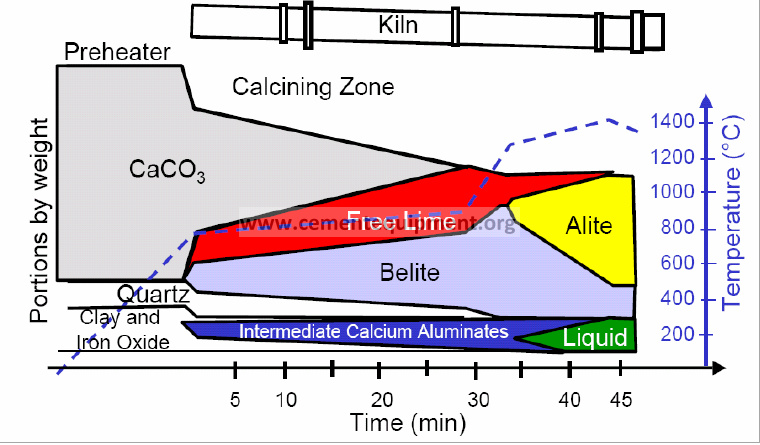
Summary of Kiln Reactions
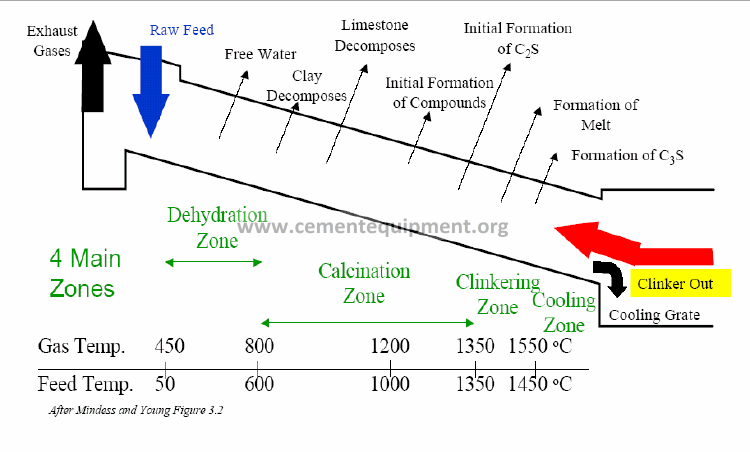
Clinker Microstructure
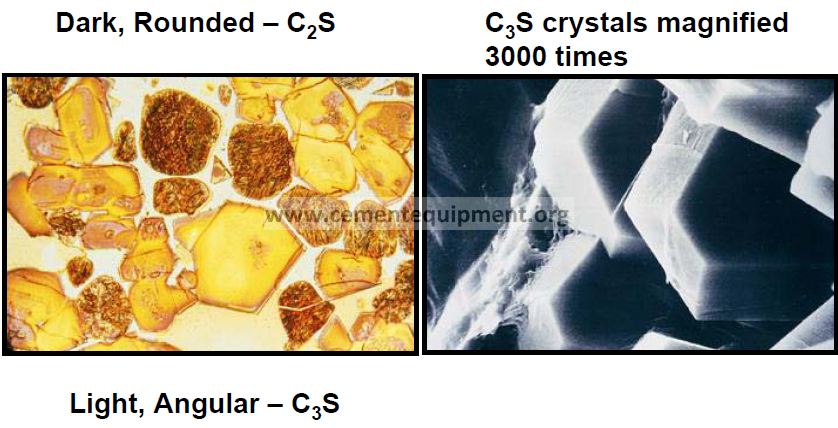
SchematicMill of a Grinding
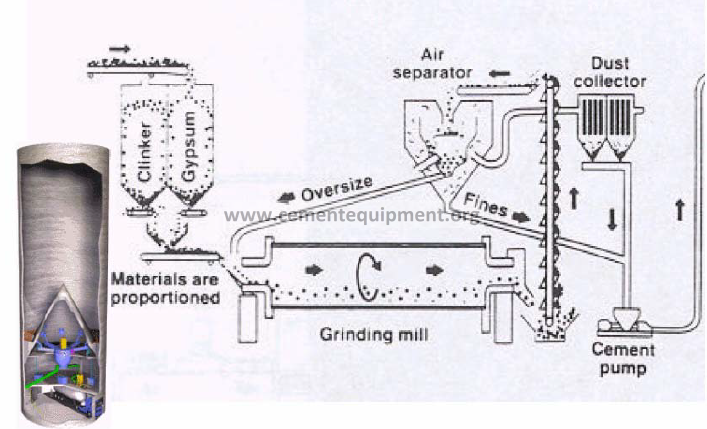
Grinding Mill
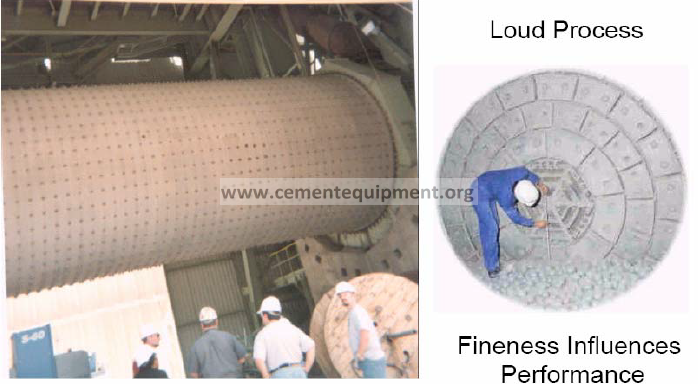
Fineness of cement
Grinding is the last step in processing
Measures of fineness
Specific surface
Particle size distribution
Blaine’s fineness
Measure of air permeability
Typical surface areas
~ 350 m2 / kg (Normal cements)
~ 500 m2 / kg (High early strength cements)
PSD of cement
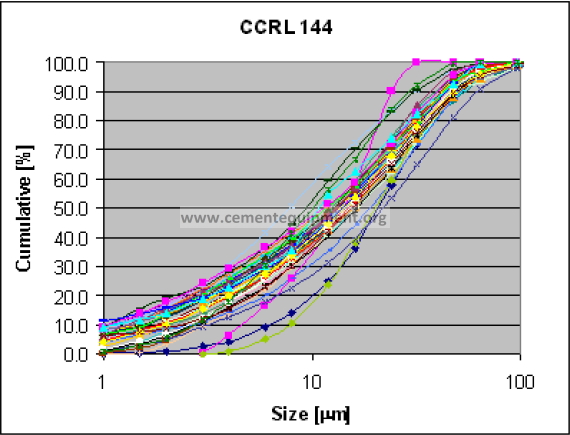
Significance of fineness
Finer cement = Faster reaction
Finer cement = Higher heat of hydration
Large particles do not react with water completely
Higher fineness
Higher shrinkage
Reduced bleeding
Reduced durability
More gypsum needed
Summary of the Cement Making Process
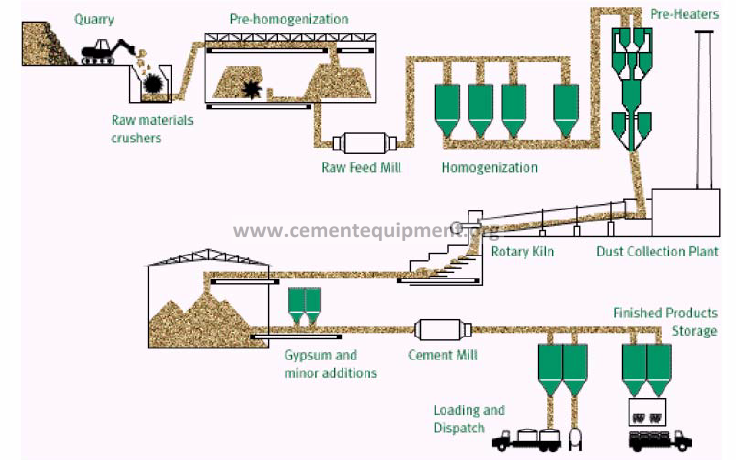
Some practical issues about cement making
Scale of the business (local / national)
LOCATION
Plant operations
Wet versus Dry process
Energy savings – Preheaters, Dust
Energy and fuels
Environment
The economics of cement making
Transportation costs – when shipped further than ~ 200 miles
About 175 plants nationwide
Cost of maintenance – plant and the environment
Rising fuel costs – raw material quality and fuel dependence
Continuous operability
Portland Cement Types (ASTM C 150)
ASTM C 150 (AASHTO M 85)
5 types in general – types I to V
Type I – Normal (OPC)
Type II – Moderate Sulfate Resistance
Type III – High early Strength
Type IV – Low heat of hydration
Type V – High Sulfate Resistance
Chemical compositions different
Other special Types
Not very commonly used or manufactured
Type IA – Normal (OPC) – air entraining
Type IIA – Moderate sulfate resistance –air entraining
Type IIIA- High early strength – air entraining
Typical Compositions
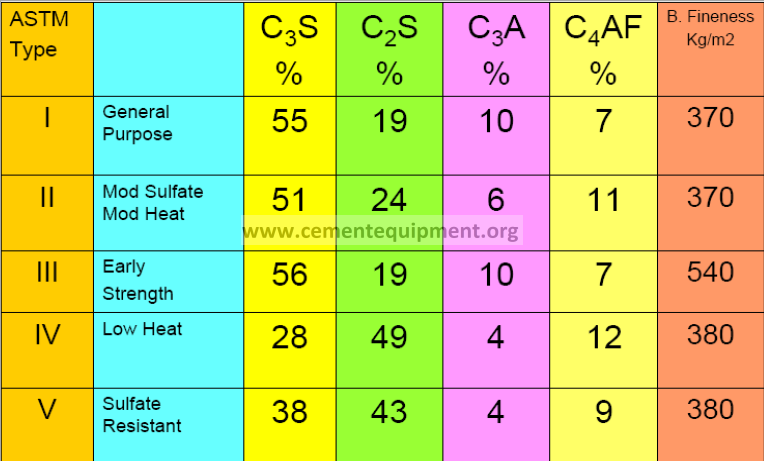
Applications of Type- I cement
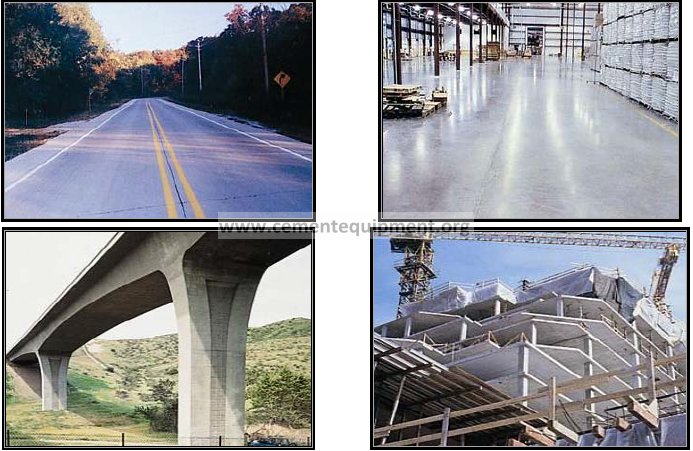
Applications of Type II and IV
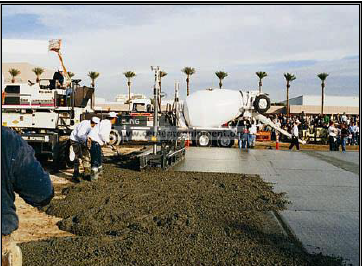
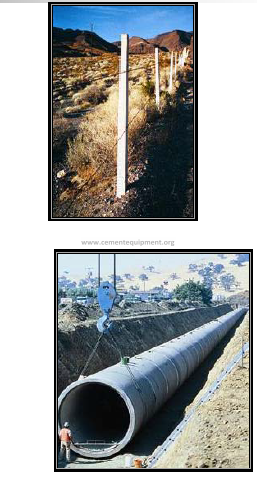
BE AWARE OF THIS
Type of cement is no guarantee against other bad concreting practices
To be durable, you have to get the basics right: the cement type is just an aid
Water-cement ratio is key
Top picture – w/c 0.69, Type V
Bottom picture – w/c 0.35, Type V
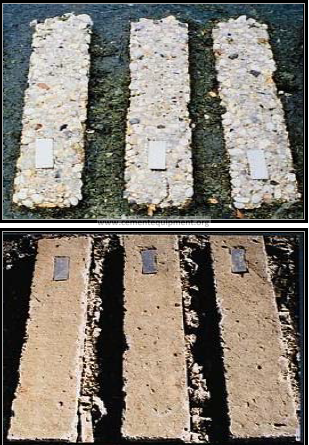
Applications of Type III (High early strength)
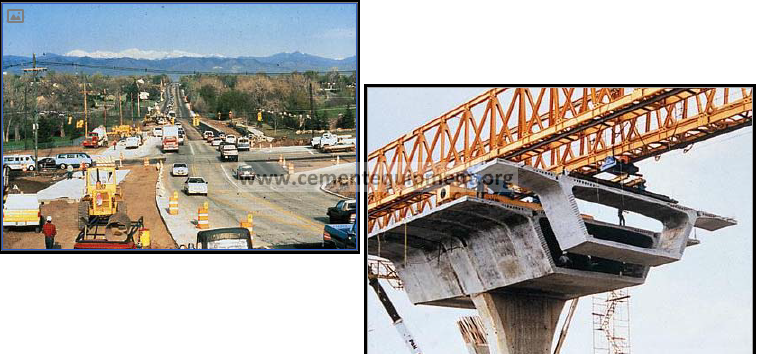
Applications of Type IV (Low Heat)
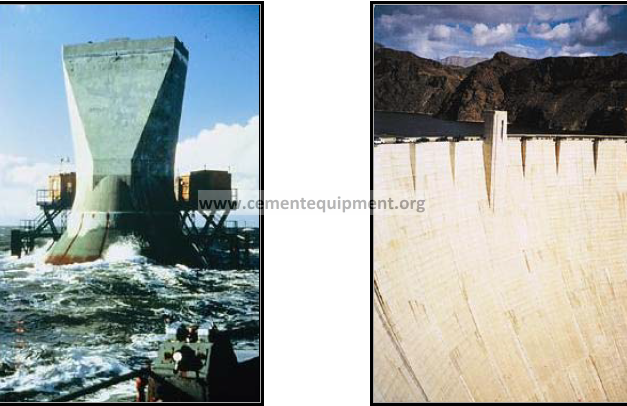
White Portland Cement
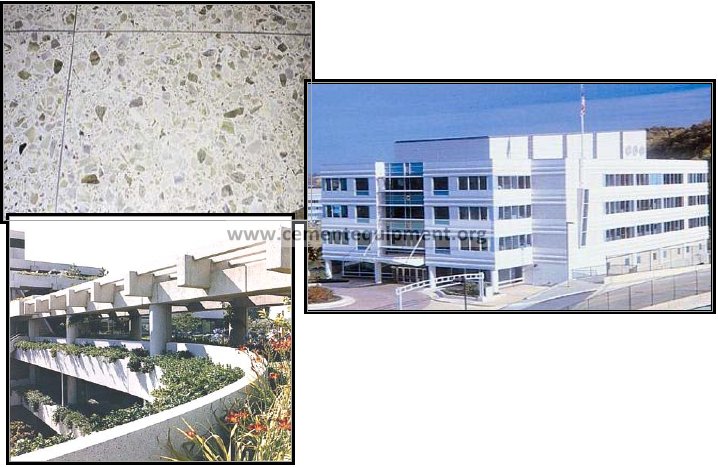
Blended Hydraulic Cements
ASTM C 595 (AASHTO M 240)
Blending supplementary materials into OPC
Improves properties (we will see in detail how this is effected)
Reduces cost – materials like fly ash are waste products from other industries
Environmental effects –concrete acts as a sink to hazardous products
Blended Cements
Type IS –Portland blast furnace slag cement
Type IP, Type P – Portland Pozzolan cement
Type I(PM) – Pozzolan modified Portland cement
Type S –slag cement
Type I (SM) – Slag modified pozzolan cement
Other Hydraulic Cements
ASTM C 1157 – 6 types
Type GU – General Use
Type HE – High early strength
Type MS –Moderate sulfate resistance
Type HS – High sulfate resistance
Type LH – Low heat of hydration
Type MH – Moderate heat of hydration